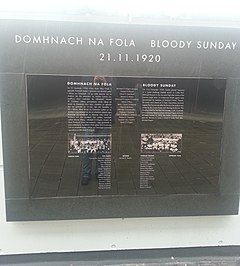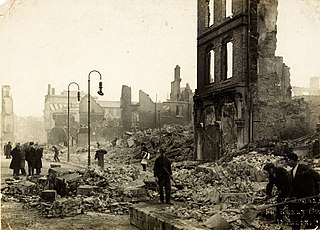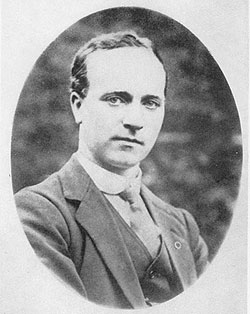 W
WBloody Sunday was a day of violence in Dublin on 21 November 1920, during the Irish War of Independence. More than 30 people were killed or fatally wounded.
 W
WThe burning of Cork by British forces took place on the night of 11–12 December 1920, during the Irish War of Independence. It followed an Irish Republican Army (IRA) ambush of a British Auxiliary patrol in the city, which wounded twelve Auxiliaries, one fatally. In retaliation, the Auxiliaries, Black and Tans and British soldiers burned homes near the ambush site, before looting and burning numerous buildings in the centre of Cork, Ireland's third-biggest city. Many civilians reported being beaten, shot at, and robbed by British forces. Firefighters testified that British forces hindered their attempts to tackle the blazes by intimidation, cutting their hoses and shooting at them. Two unarmed IRA volunteers were also shot dead at their home in the north of the city.
 W
WBloody Sunday was a day of violence in Dublin on 21 November 1920, during the Irish War of Independence. More than 30 people were killed or fatally wounded.
 W
WThe Dromkeen ambush took place on 3 February 1921, during the Irish War of Independence, at Dromkeen in County Limerick. The Irish Republican Army (IRA) ambushed a Royal Irish Constabulary (RIC) patrol, killing 11 policemen.
 W
WTomás Mac Curtain was a Sinn Féin Lord Mayor of Cork, Ireland. He was elected in January 1920.
 W
WMajor Hugh Bertie Campbell Pollard was an author, journalist, adventurer, firearms expert, and a British SOE officer. He is chiefly known for his intelligence work during the Irish War of Independence and for the events of July 1936, when he and Cecil Bebb flew General Francisco Franco from the Canary Islands to Morocco, thereby helping to trigger the outbreak of the Spanish Civil War. He served his country in both World Wars and was the author of many published works on weaponry, in particular on sporting firearms.
 W
WThe Rineen ambush was an ambush carried out by the Irish Republican Army (IRA) on 22 September 1920, during the Irish War of Independence. The attack took place at Drummin Hill in the townland of Drummin, near the hamlet of Rineen, County Clare.
 W
WThe Sack of Balbriggan took place on the night of 20 September 1920, during the Irish War of Independence. British police officers known as Black and Tans went on a rampage in the small town of Balbriggan, County Dublin, burning more than fifty homes and businesses, looting, and killing two local men. Many locals were left jobless and homeless. The attack was revenge for the murder of two police officers in Balbriggan by the Irish Republican Army (IRA). It was the first major 'reprisal' attack against an Irish town during the conflict. The sack of Balbriggan drew international attention, leading to heated debate in the British parliament and criticism of British government policy in Ireland.
 W
WLieutenant-Colonel Gerald Bryce Ferguson Smyth, DSO and Bar, French Croix de Guerre and Belgian Croix de guerre was a British Army officer and police officer who was at the centre of a mutiny in the ranks of the Royal Irish Constabulary during the Irish War of Independence. He was shot and killed by the Irish Republican Army in Cork in 1920.